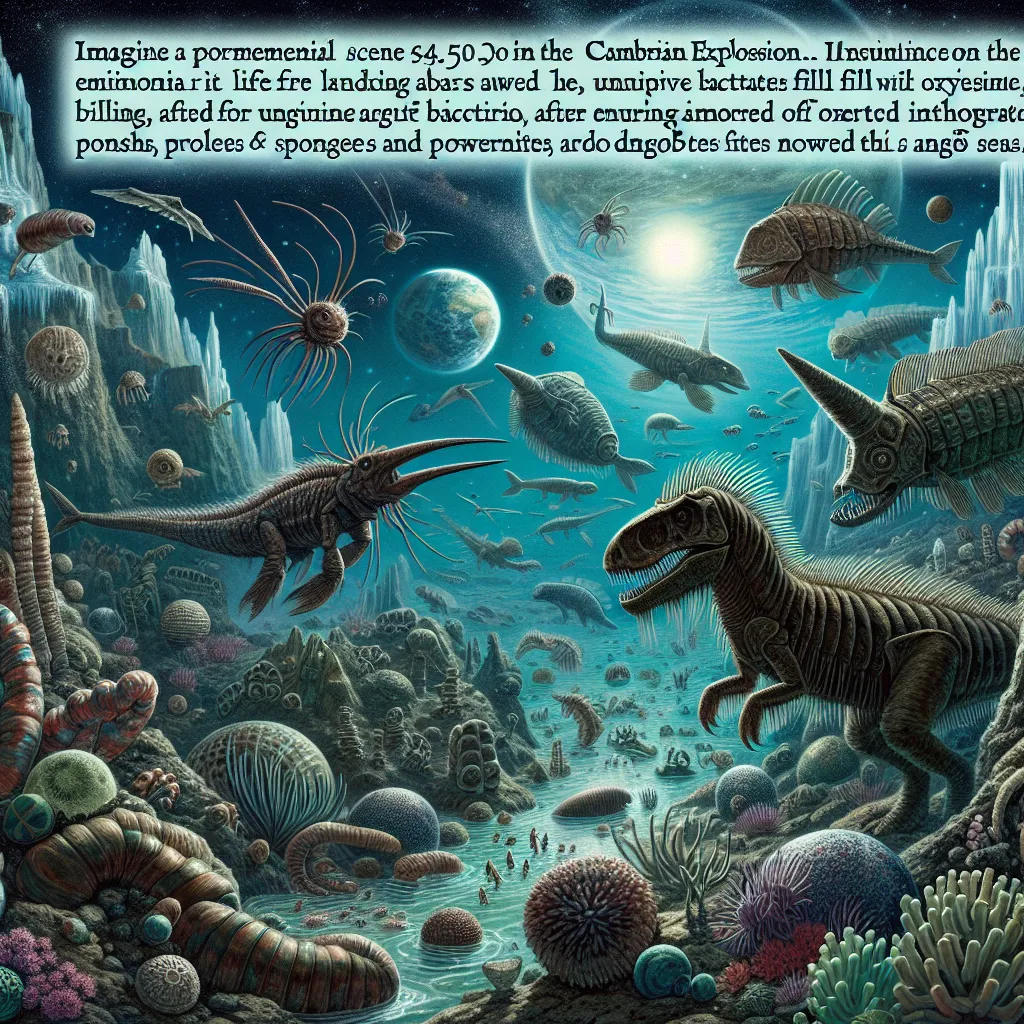About 540 million years ago, Earth’s oceans were brimming with oxygen, creating a prime environment for flourishing life. In this vibrant marine world, primitive bacteria thrived, probably surviving the harsh conditions of past ice ages. As plants began to dominate the landscape, another fascinating creature emerged – the Wiwaxia. This curious organism, resembling an armored slug, was among the first complex multi-celled organisms of its time.
We were entering a wildly transformative era in Earth’s history known as the Cambrian Explosion. The increased levels of oxygen permitted life forms to grow larger and develop bony skeletons. This period saw an explosion of diversity with worms, sponges, and trilobites, which are the ancient relatives of insects, lobsters, and scorpions. Life underwater was blossoming from microscopic bacteria to much larger, more formidable creatures.
One of the standout giants in this bustling oceanic scene was the Anomalocaris. This sea predator, measuring about sixty centimeters long, was a sight to behold with its large eyes, razor-sharp teeth, and grasping limbs. All it needed to do was target a trilobite, flip it over to expose its soft belly, and feast.
The Cambrian Explosion was indeed a fantastical and dynamic phase in Earth’s history, setting the stage for the complex web of life forms we see today.






